The 2020 Trek Rail is the successor to the popular Trek Powerfly LT eMTB. Although the new Rail looks very similar to the Powerfly LT, a lot has changed, which the American brand has aimed to emphasise with the change in name. We had the exclusive opportunity to test ride the bike in Italy.


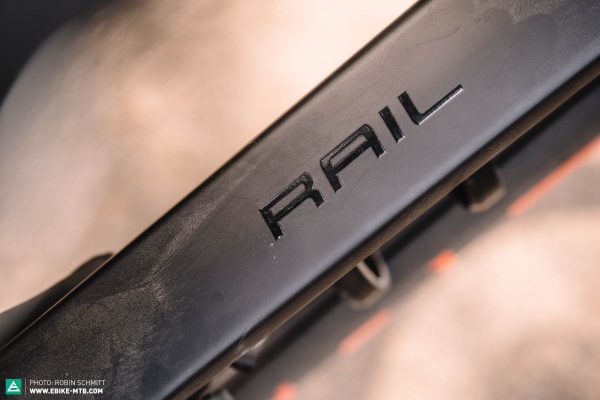

“Let’s go railing”: with the 2020 Trek Rail, the name says it all. The frame of the new Rail is based on the Slash enduro bike and its modern geometry promises to offer maximum fun on the trail. It relies on many of Trek’s proven technologies and, of course, the new Bosch Performance CX motor with a removable, 625 Wh internal Bosch Powertube battery.
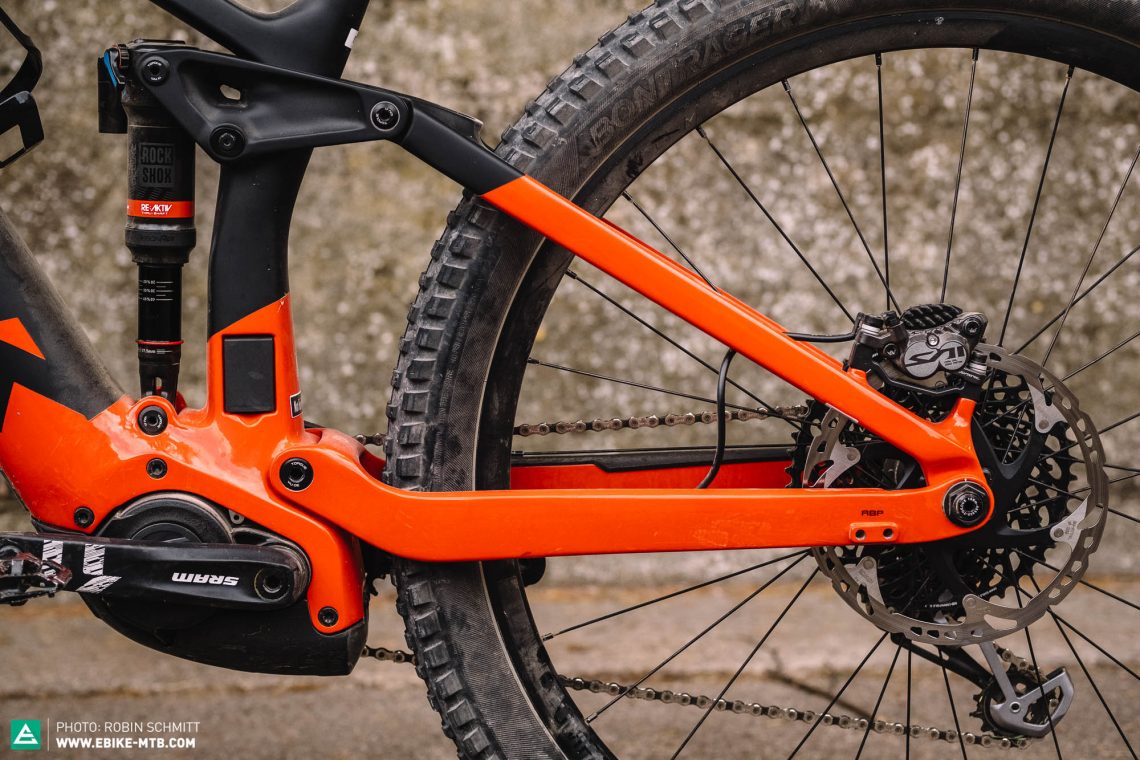
The new Rail is available either with an aluminium or carbon frame (from the Rail 9.7 and up), featuring 150 mm rear travel, a 160 mm fork, and going against the mixed wheel size trend, it rolls on big 29×2.6″ tires front and rear. The prices range from € 4,499 for the Rail 5 to € 11,999 for the Rail 9.9.
Geometry, suspension, design, integration and wheel sizes – what’s new about the 2020 Trek Rail?
By changing the name to “Rail” Trek are emphasising the re-alignment of the successor to Powerfly LT. True to the motto “Ride Bikes. Have fun. Feel good.” the American brand promises improved trail performance, more range, more power and an integrated design with clever details.

The previous Powerfly LT was the long-travel (LT) version of the Powerfly, which was aimed more towards XC or backcountry riding. Accordingly, it could never completely hide its tame character. The design of the new, 2020 Trek Rail is based on the Trek Slash, completely revamping its geometry and making it more capable and aggressive. The chainstays were shortened by 27 mm (to 448 mm), the reach grew by 11 to 27 mm depending on the frame size, the head angle has become 1.5° slacker (64.5°) and the bottom bracket has been dropped by 19 mm. This is with the Mino Link geometry adjustment in the low position, which lets you adjust the Rail’s geometry slightly.
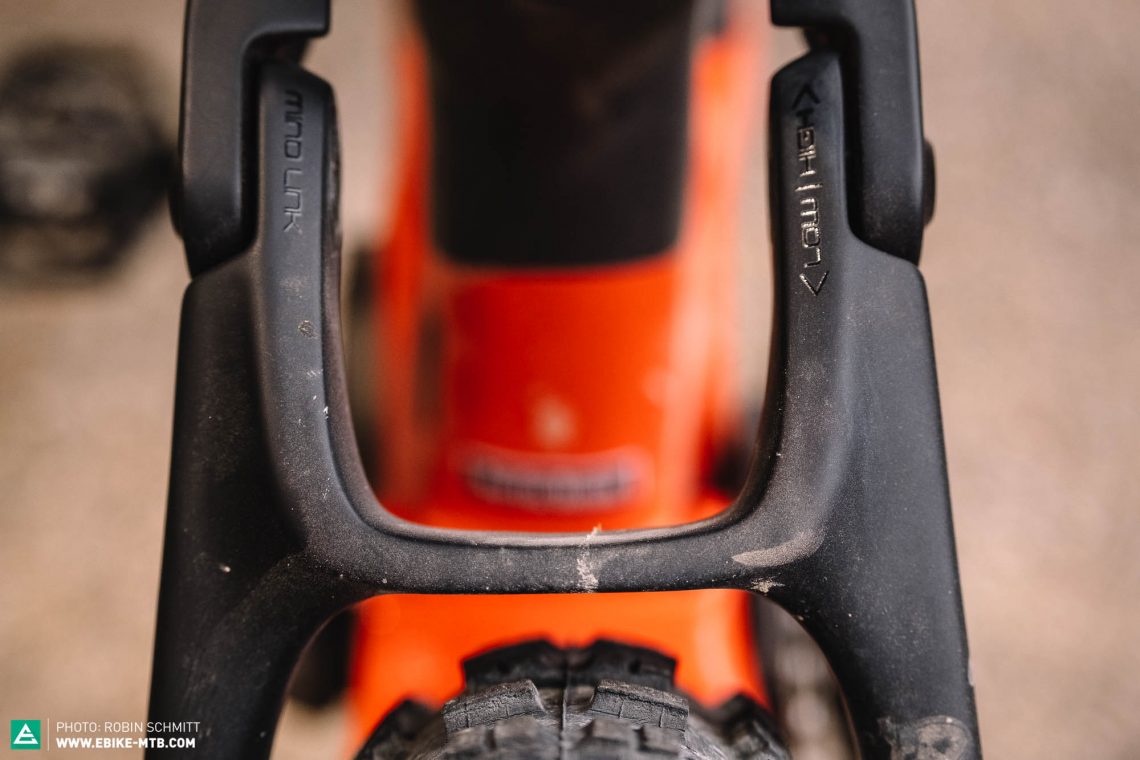

The 19 mm increased BB drop compared to the Powerfly LT incidentally also has to do with the larger 29×2.6″ tires, since the previous Powerfly LT came with 27.5+ tires.
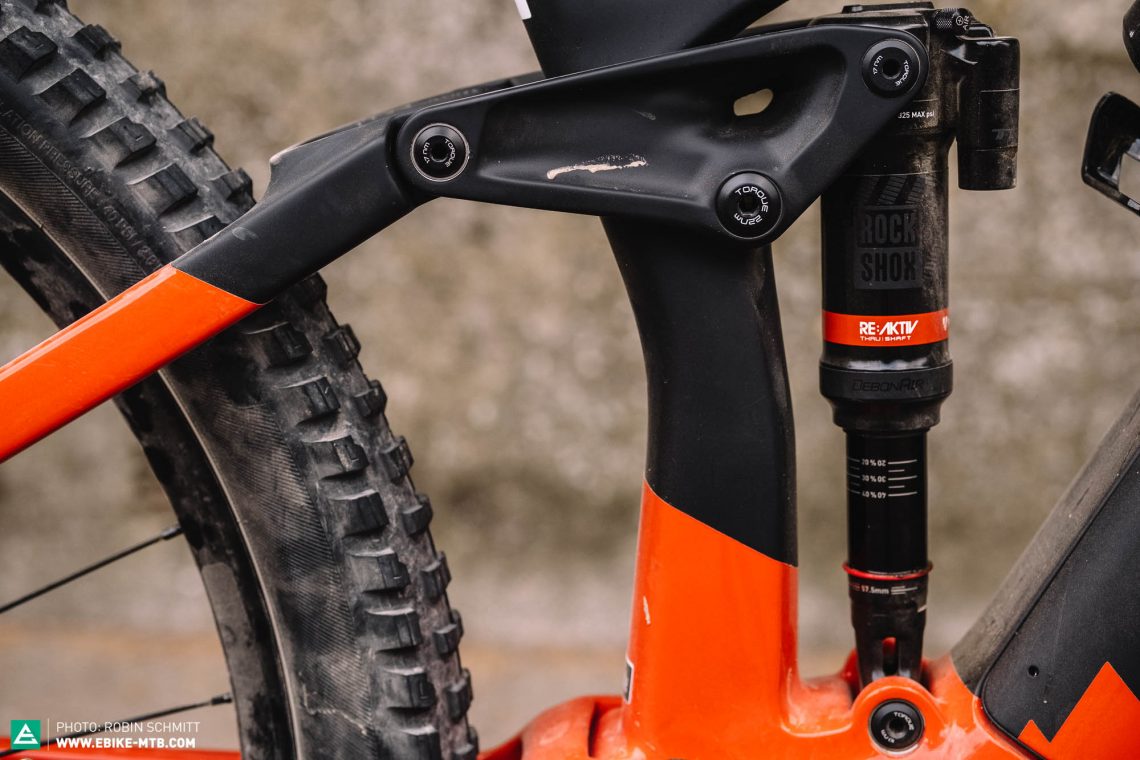
For the suspension, Trek have changed the position of the main pivot point to improve the pedalling performance and also to make the suspension’s leverage ratio more progressive for more aggressive riding. Also, Trek now spec their RockShox Deluxe RT3 RE:aktiv shock with Thru-Shaft technology on the Rail 9 (but not the 9.7), 9.8 and 9.9, promising maximum control and traction in rough terrain. Whereas the oil usually gets pressurised in an internal chamber to compensate for the decreased volume caused by the compression of the shock piston, Thru Shaft technology allows the piston to move through the shock. With the reduction in pressure, the breakaway force is reduced and allows the shock to respond more sensitively. Of course, the Rail also features Trek’s ABP (Active Braking Pivot), making the suspension remain active under braking
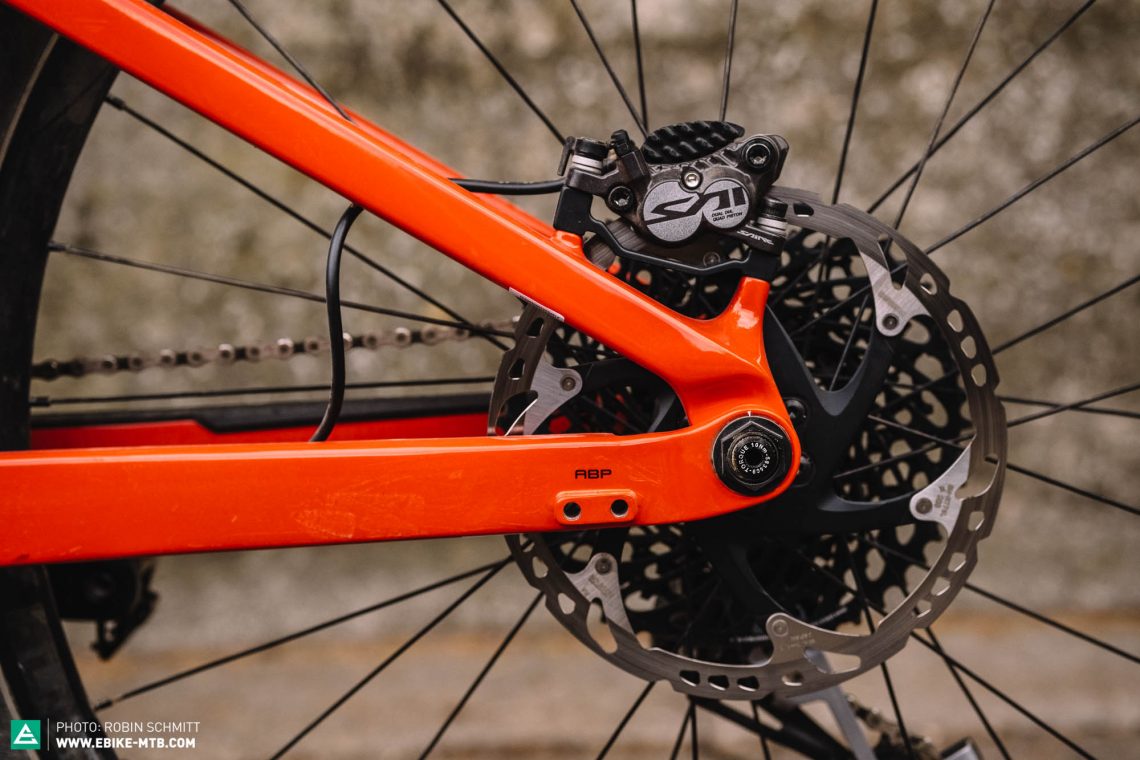
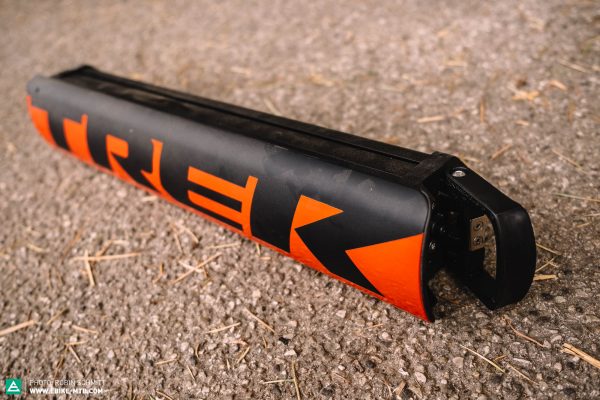
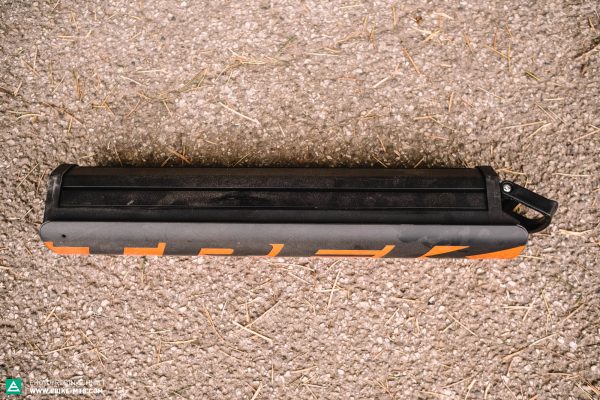
“R.I.B.” – Removable Integrated Battery – is what Trek call their unique solution to integrating the battery, as first presented on the 2019 Powerfly LT. The R.I.B. performed just as convincingly on the new Rail, offering a high-quality, tactile feel, ease of use and a convenient carry-handle. You can remove the battery without tools from the side of the down tube where it is much less exposed to mud. This also leaves enough room in the front triangle to fit a bottle cage. The battery cover and the Bosch PowerTube battery are one unit, but they can easily be screwed apart and Trek sell colour-matching battery covers if you want to use a second battery.
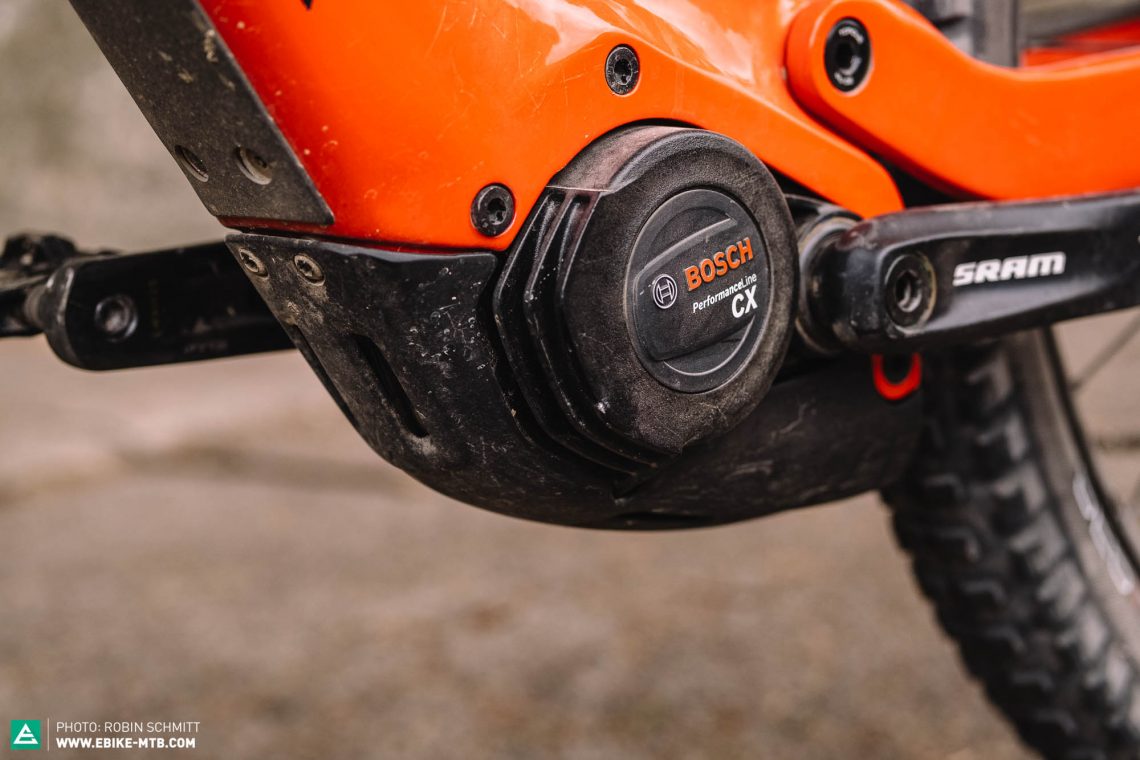

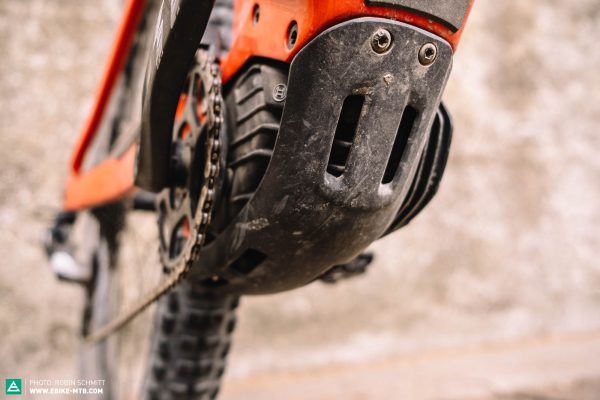
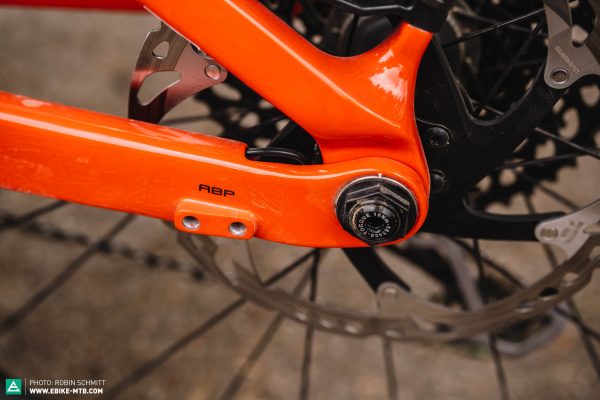
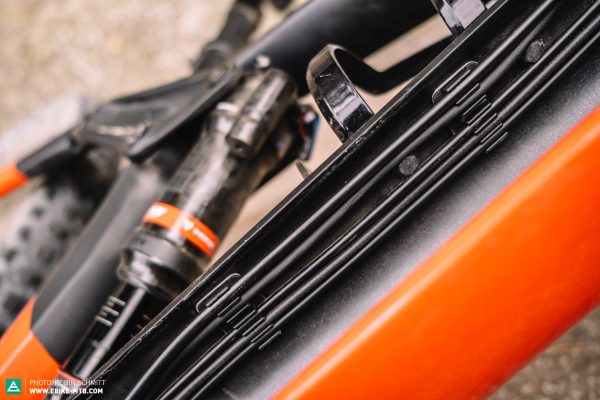

To keep the proportions of the frame and fork similar, German brand BULLS opted to use a 1.8” steerer tube standard on their new Sonic Evo AM 6 Carbon 2020. Trek took a much simpler but equally effective approach: instead of changing the size of the steerer tube they simply had the size of the fork crown increased, which achieved the same effect visually. Technically, this solution is said to be more than stiff enough.

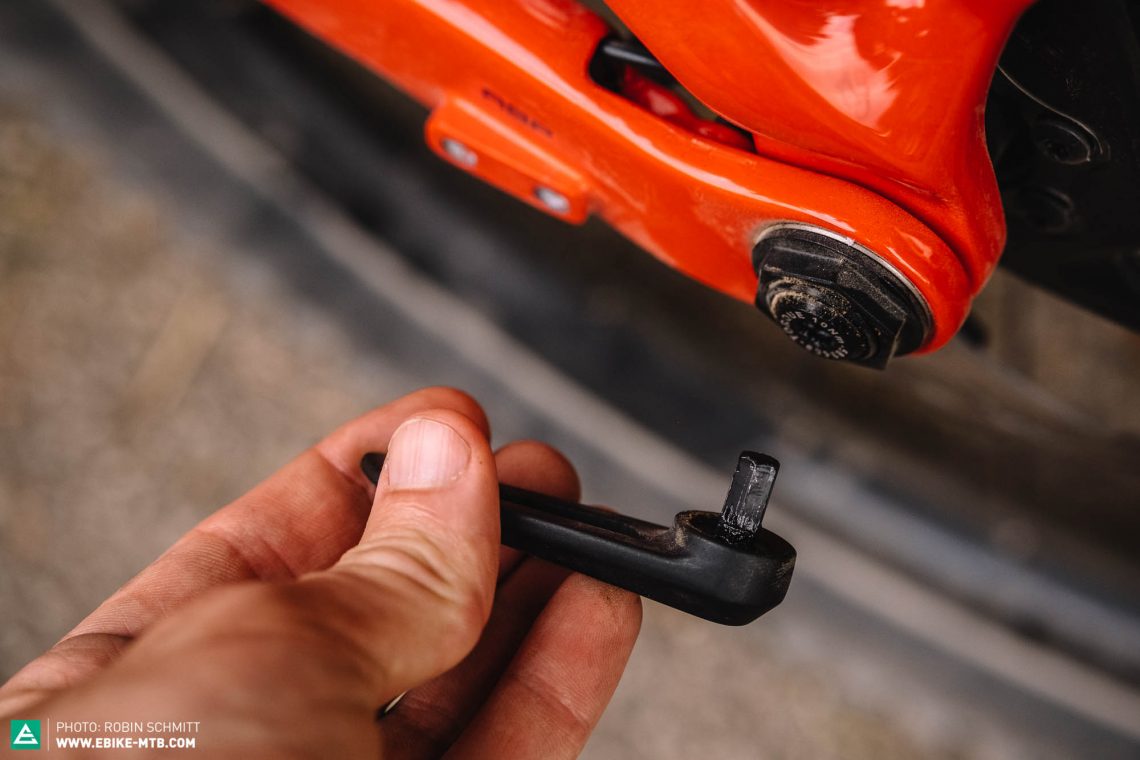
An overview of the 2020 Trek Rail range: spec, sizes, availability and our recommendations
The pricing of the Trek Rail range starts at € 4,499 for the Rail 5 and tops out at € 11,999 for the flagship Rail 9.9. The Trek Rail comes specced with RockShox suspension across the range, as well as four-piston brakes for precise and reliable braking performance, and 12-speed drivetrains with 11-50t or 10-50t wide-range cassettes. Apart from the flagship Rail 9.9, all models come with a Bosch Purion display. The flagship model features a Bosch Kiox display mounted on the top tube.
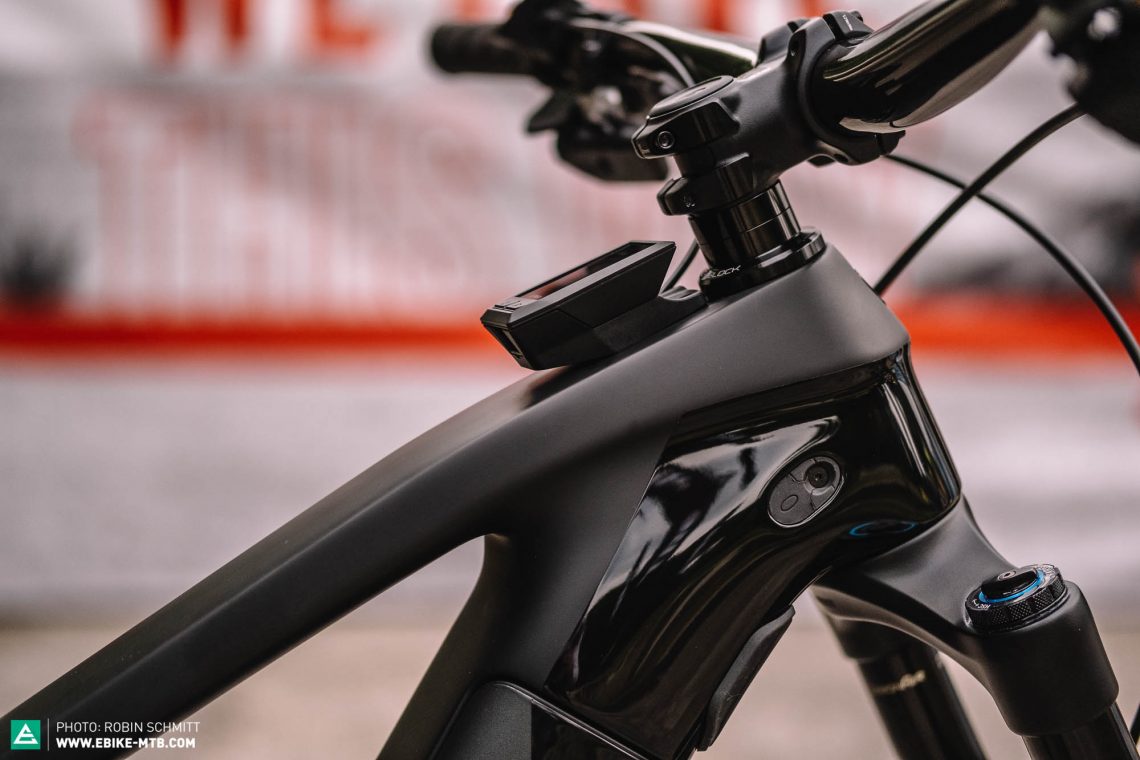
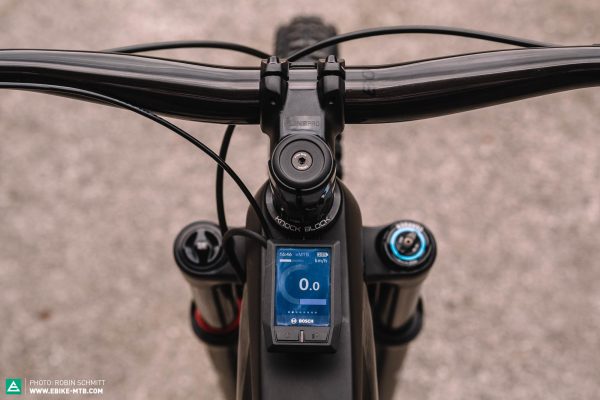
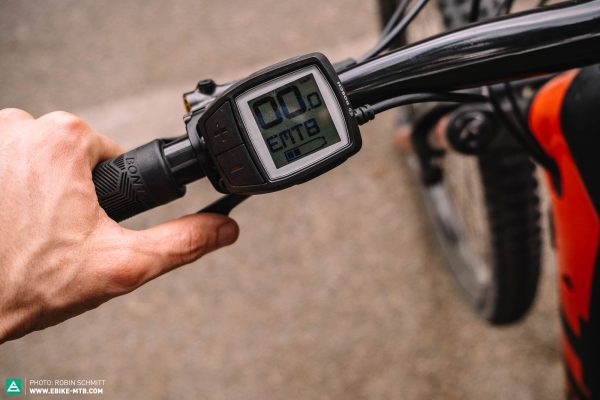
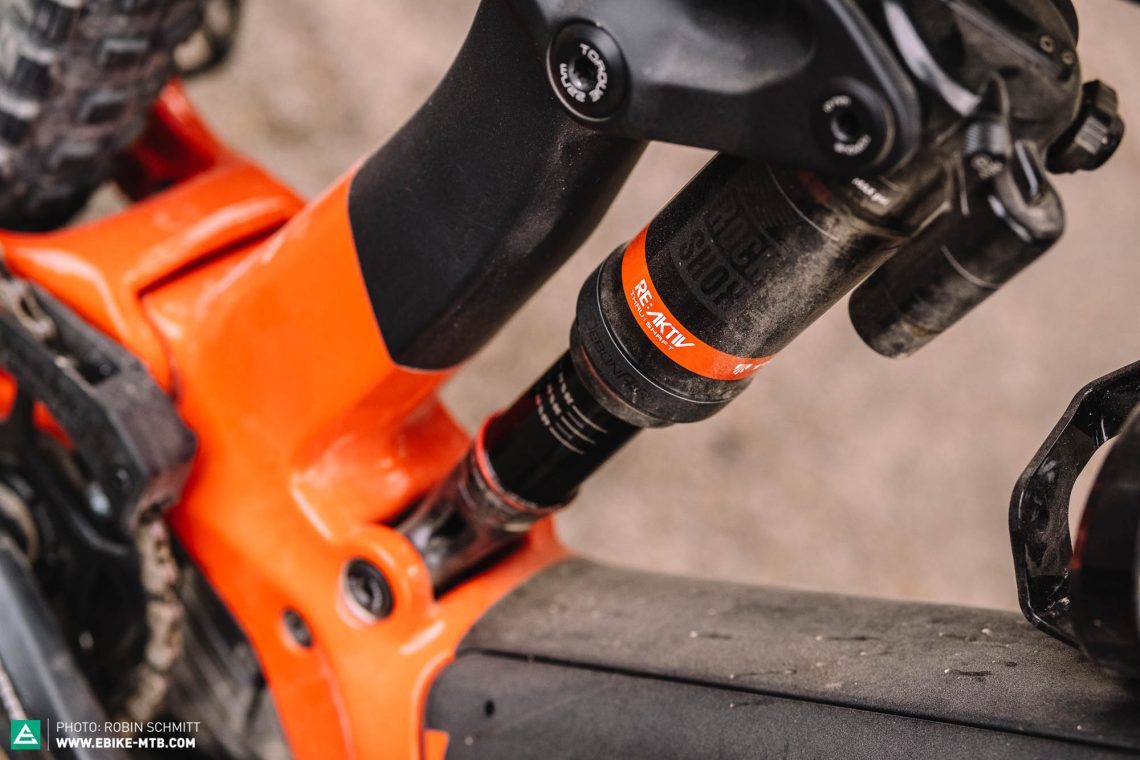
Only selected models feature the best in terms of tires and rear suspension: the Trek Rail 9 (not the 9.7), 9.8 and 9.9 come with the new rear shock featuring Thru-Shaft technology. The same applies to the robust and grippy Bontrager SE5 Team Issue TLR enduro tires.

The € 6,499 Trek Rail 9.7 is the most affordable carbon-framed option and costs the same as the Rail 9. The Rail 9 has an aluminium frame but comes with better, more performance-oriented components. The advantages of the aluminium Rail are obvious: apart from small differences in cockpit, saddle and grips, it has the same high-end components as the carbon 9.8 model we tested. If you must have a carbon frame, you could buy the 9.7 – but we would recommend the much better specced Rail 9.8. The extra € 700 is worth the gain in performance. CORRECTION: There was a mistake in Trek’s original press material stating that the 9.7 has a 500 Wh battery and that’s what we wrote in this paragraph as a negative point. But the good news is that the 9.7 model actually comes with a 625 Wh battery. Only the Rail 5 comes with a 500 Wh battery.
Trek Rail 9.9
Frame material: Carbon
Motor/Battery/Display Bosch Performance CX, 625 Wh, Kiox
Fork: RockShox Lyrik Ultimate, 160 mm
Shock: RockShox Deluxe RT3 RE:aktiv Thru Shaft
Drivetrain: SRAM Eagle AXS wireless, 12-speed
Brakes: Shimano XT M8120 4-piston hydraulic disc, 180 mm rotor
Seatpost: RockShox Reverb AXS
Wheelset: Bontrager Line Carbon 30
Tires: Bontrager SE5 Team Issue 29 x 2.60″
Price: € 11,999
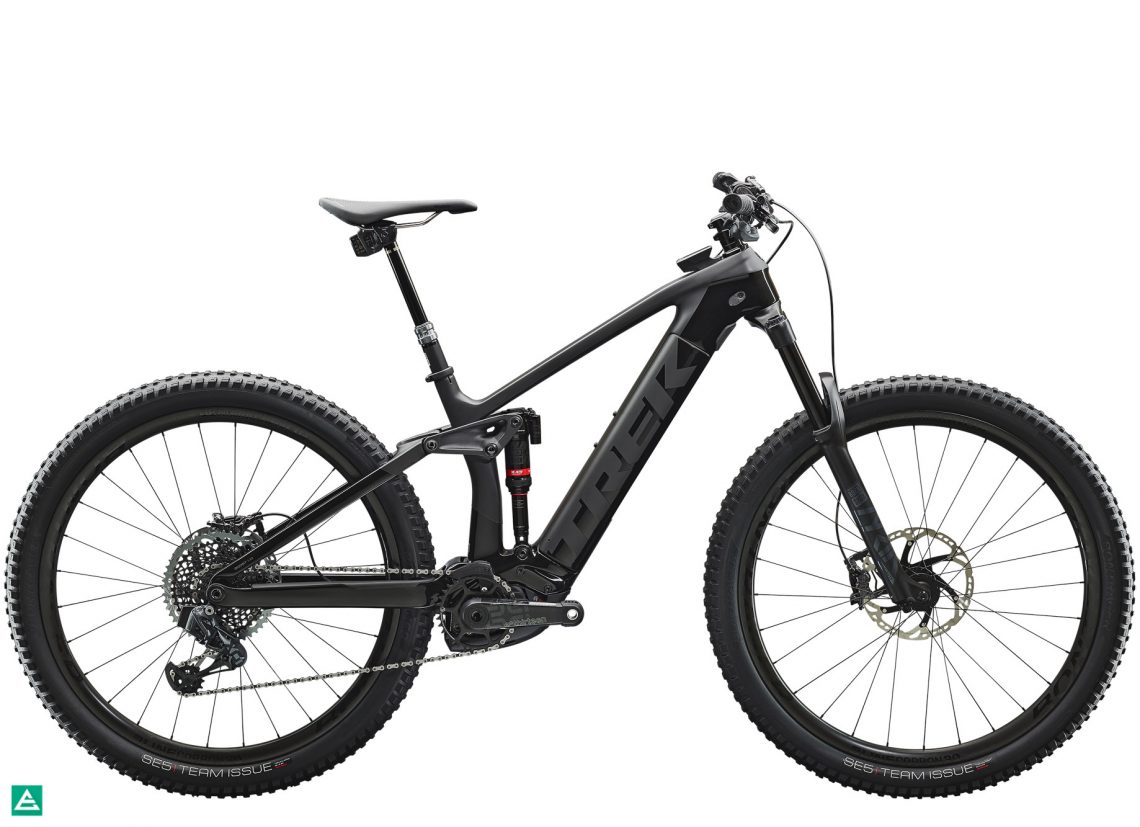
Trek Rail 9.8
Frame material: Carbon
Motor/battery/Display: Bosch Performance CX, 625 Wh, Purion
Fork: RockShox Lyrik Select Plus, 160 mm
Shock: RockShox Deluxe RT3 RE:aktiv Thru Shaft
Drivetrain: SRAM GX Eagle single-click, 12-speed
Brakes: Shimano SLX M7120 4-piston hydraulic disc, 180 mm rotor
Seatpost: Bontrager Line Elite Dropper
Wheelset: Bontrager Line Comp 30
Tires: Bontrager SE5 Team Issue 29 x 2.60″
Price: € 7,199

Trek Rail 9.7
Frame material: Carbon
Motor/battery/Display: Bosch Performance CX, 625 Wh, Purion
Fork: RockShox Yari RC, 160 mm
Shock: RockShox Deluxe RL
Drivetrain: SRAM NX Eagle single-click, 12-speed
Brakes: Shimano MT520 4-piston hydraulic disc
Seatpost: Bontrager Line Dropper
Wheelset: Bontrager Line Comp 30
Tires: Bontrager XR5 Team Issue 29 x 2.60″
Price: € 6,499

Trek Rail 9
Frame material: Aluminium
Motor/battery/Display: Bosch Performance CX, 625 Wh, Purion
Fork: RockShox Lyrik Select Plus, 160 mm
Shock: RockShox Deluxe RT3 RE:aktiv Thru Shaft
Drivetrain: SRAM GX Eagle single-click, 12-speed
Brakes: Shimano SLX M7120 4-piston hydraulic disc, 180 mm rotor
Seatpost: Bontrager Line Elite Dropper
Wheelset: Bontrager Line Comp 30
Tires: Bontrager SE5 Team Issue 29 x 2.60″
Price: € 6,499
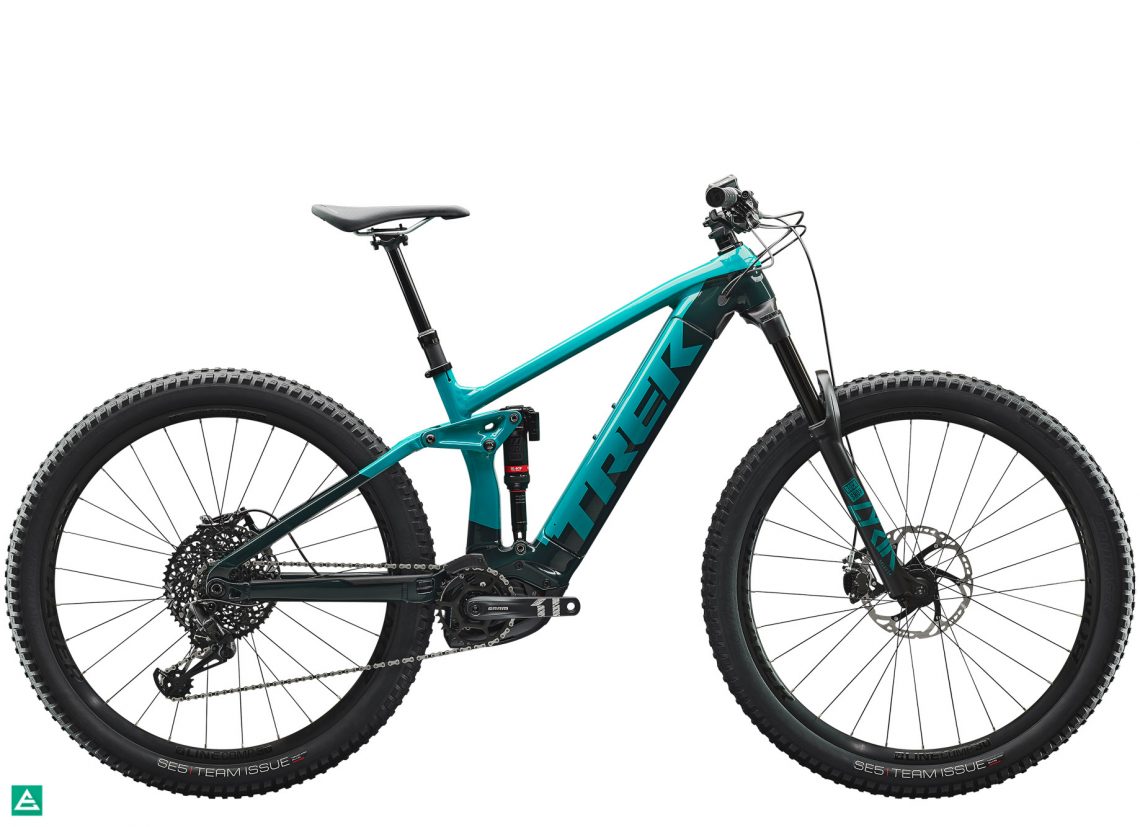
Trek Rail 7
Frame material: Aluminium
Motor/battery/Display: Bosch Performance CX, 625 Wh, Purion
Fork: RockShox Yari RC, 160 mm
Shock: RockShox Deluxe RL
Drivetrain: Shimano SLX M7100, 12-speed
Brakes: Shimano MT520 4-piston hydraulic disc
Seatpost: TranzX JD-YSP18
Wheelset: Bontrager Line Comp 30
Tires: Bontrager XR5 Team Issue 29 x 2.60″
Price: € 5,499
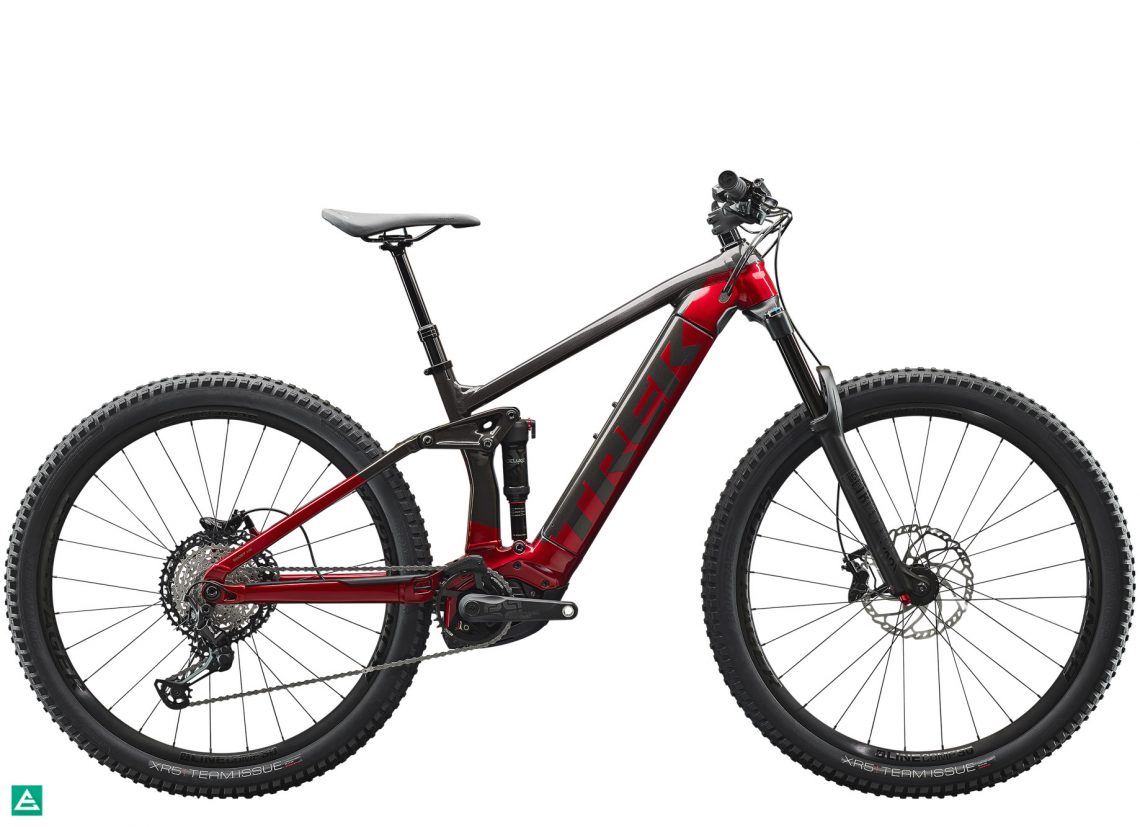
Trek Rail 5
Frame material: Aluminium
Motor/battery/Display: Bosch Performance CX, 500 Wh, Purion
Fork: RockShox 35 Gold RL, 160 mm
Shock: RockShox Deluxe RL
Drivetrain: SRAM SX Eagle single-click, 12-speed
Brakes: Tektro HD-M745 4-piston hydraulic disc
Seatpost: TranzX JD-YSP18
Wheelset: Bontrager Naben mit Alex MD35 Felgen
Tires: Schwalbe Nobby Nic Performance 29 x 2.60″
Price: € 4,499
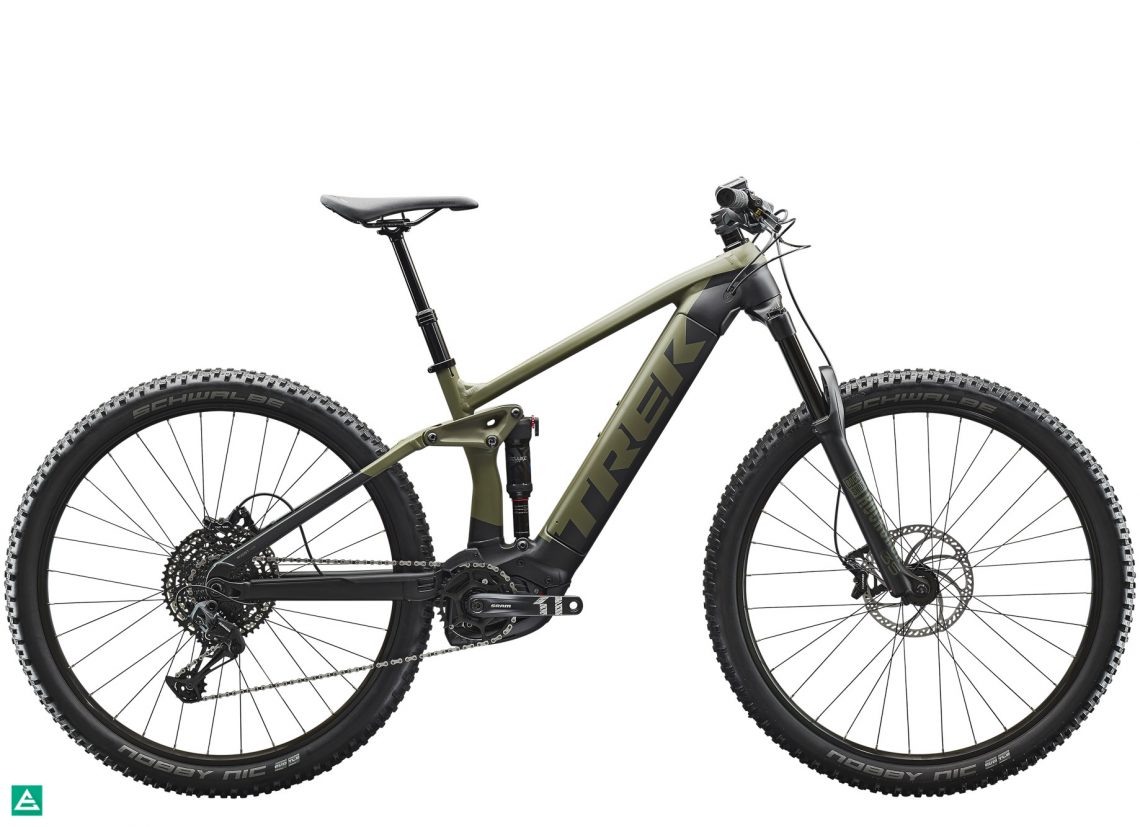
| Size (Low BB) | S | M | L | XL |
|---|---|---|---|---|
| Seat tube | 410 mm | 420 mm | 450 mm | 500 mm |
| Top tube | 588 mm | 613 mm | 634 mm | 666 mm |
| Head tube | 105 mm | 105 mm | 110 mm | 120 mm |
| Head angle | 64.5° | 64.5° | 64.5° | 64.5° |
| Seat angle | 75° | 75° | 75° | 75° |
| Chainstay | 448 mm | 448 mm | 448 mm | 448 mm |
| BB Height | 339 mm | 339 mm | 339 mm | 339 mm |
| Wheelbase | 1196 mm | 1221 mm | 1243 mm | 1277 mm |
| Reach | 420 mm | 445 mm | 465 mm | 495 mm |
| Stack | 626 mm | 626 mm | 630 mm | 639 mm |
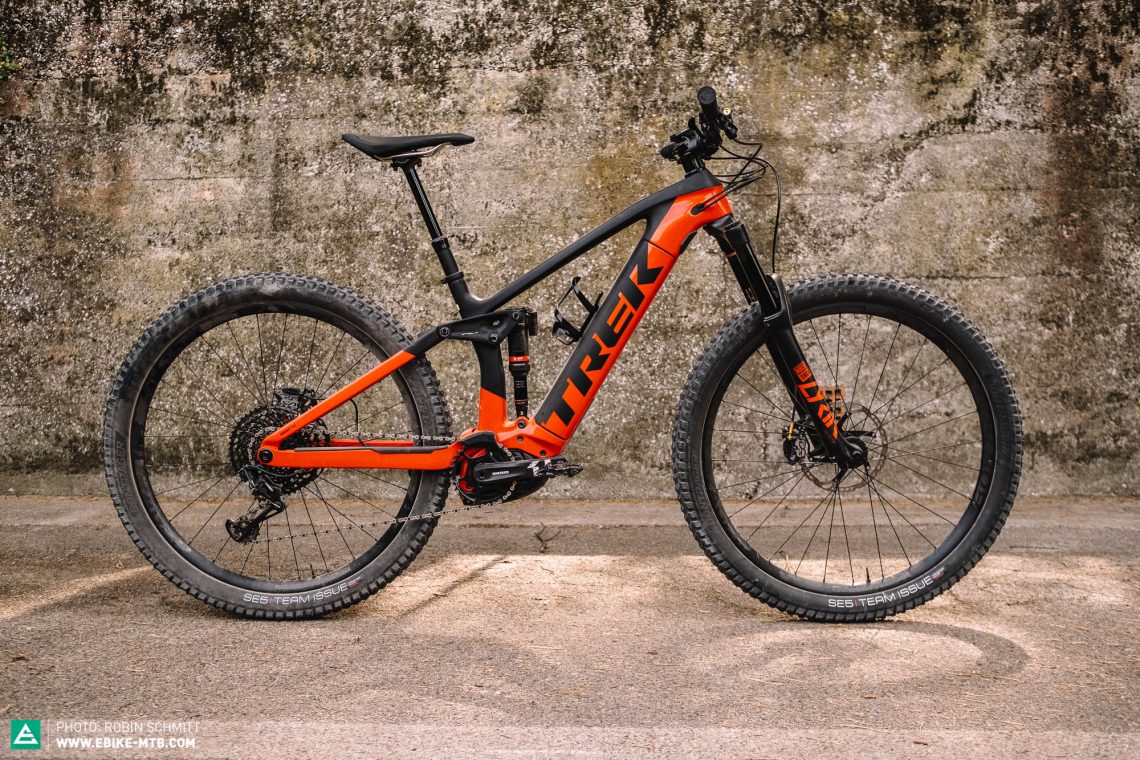
The 2020 Trek Rail 9.8 on the trail
As part of the exclusive Trek launch in Italy, we had the opportunity to be one of the first to ride the new Trek Rail. The Rail 9.8 we reviewed costs € 7,199 and weighs 22.1 kg in size M. This makes it one of the lightest full-suspension eMTBs featuring the new Bosch motor and 625 Wh battery that we’ve ever ridden.
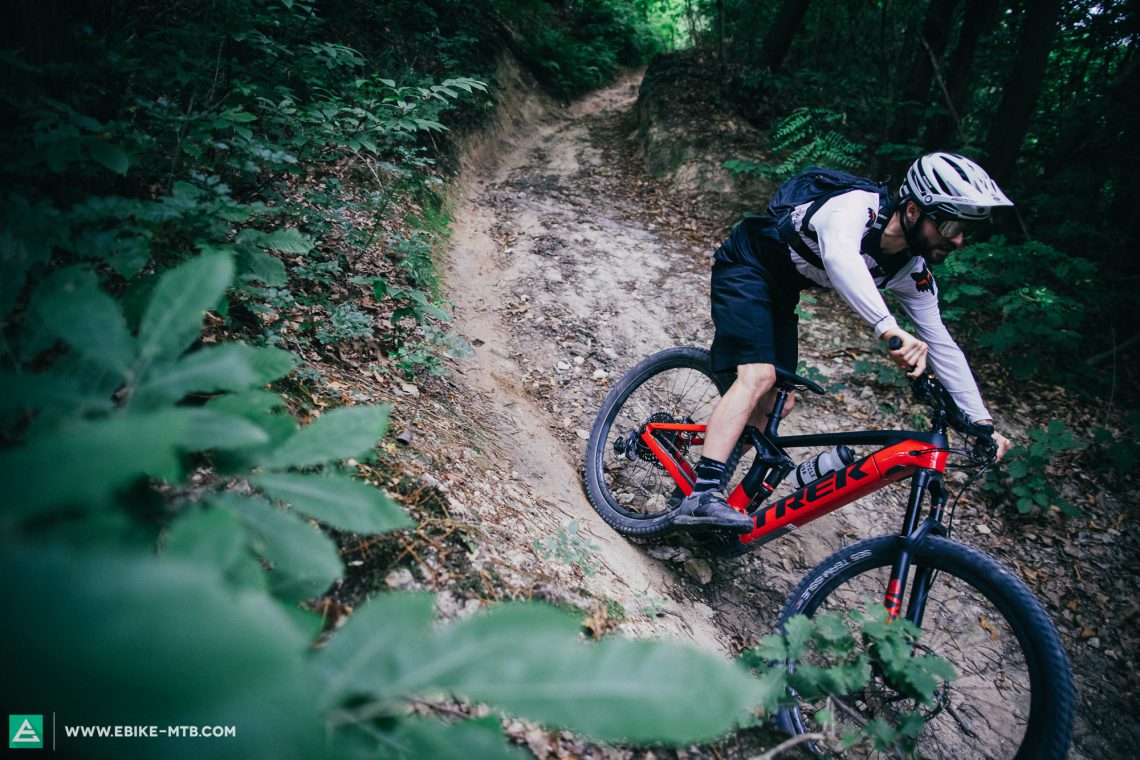
Precise, experienced and reliable not only describes the way our Italian waiter prepared our lunch, but also the new Trek Rail 9.8 on the trail: “It rides as if on rails” describes the Rail to a tee. Thus, the new bike feels unfazed and rather inconspicuous no matter how wild the trails get, mastering every kind of terrain. Composure is the name of the game. The Rail impresses with its very calm, well-balanced handling and plush suspension.

If you’re looking for a bike to ride rough and high-speed trails, you’ll find what you’re looking for here – the Rail swallows up all irregularities on the trail and instils you with the confidence to charge on, especially if you’ve got more of a passive riding style. If you’ve got an active riding style and like tight corners, the new Trek Rail will require a little more energy and body language to throw around despite its light weight. The fact that Trek rely on large 29×2.6″ tires rather than mixed wheel sizes (as most manufacturers currently do) can be felt in the slightly sluggish and cumbersome handling. The benefits? Better rollover characteristics in the rough. The Bontrager SE5 Team Issue tires are good on hard-packed trails, but on loose surfaces, they reach their limits.

As we found in our review of the Bosch Performance CX motor, it makes a kind of rattling noise that sounds like chain-slap. Besides this, the distance between the chain and the chainstay on the Trek Rail is minimal – it would have been nice if they could have dropped the chainstay some more and stuck on a modern, ribbed chainstay protector.

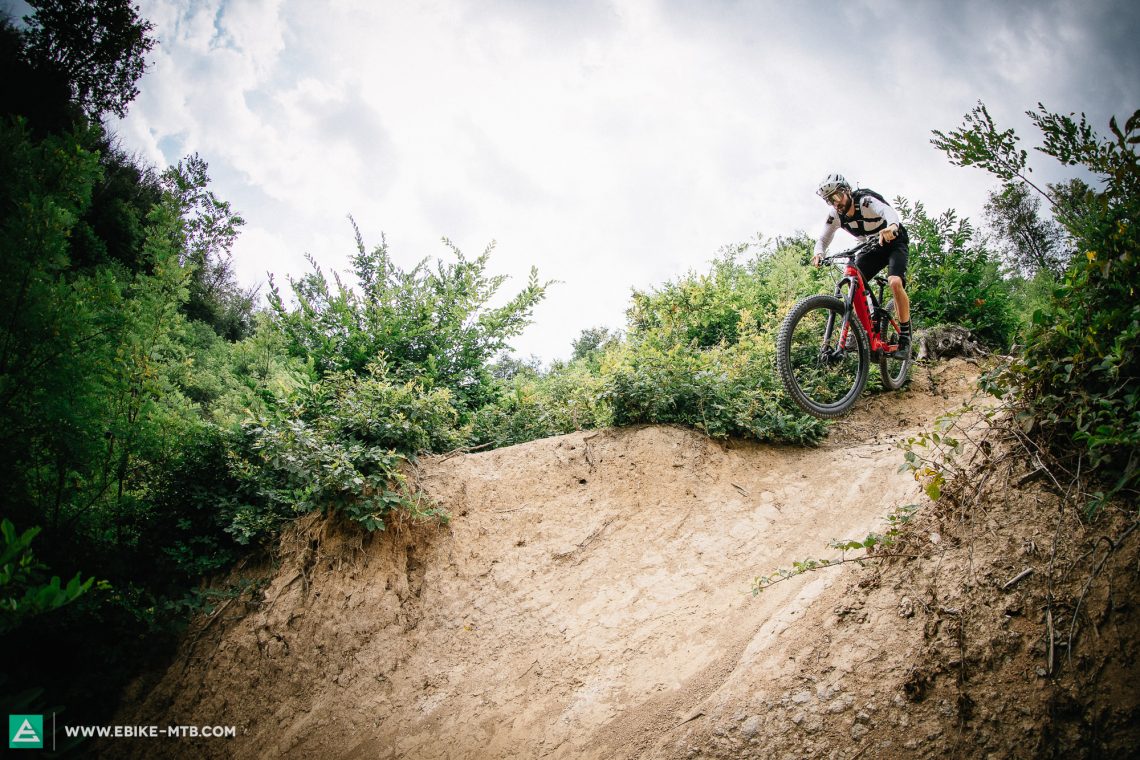
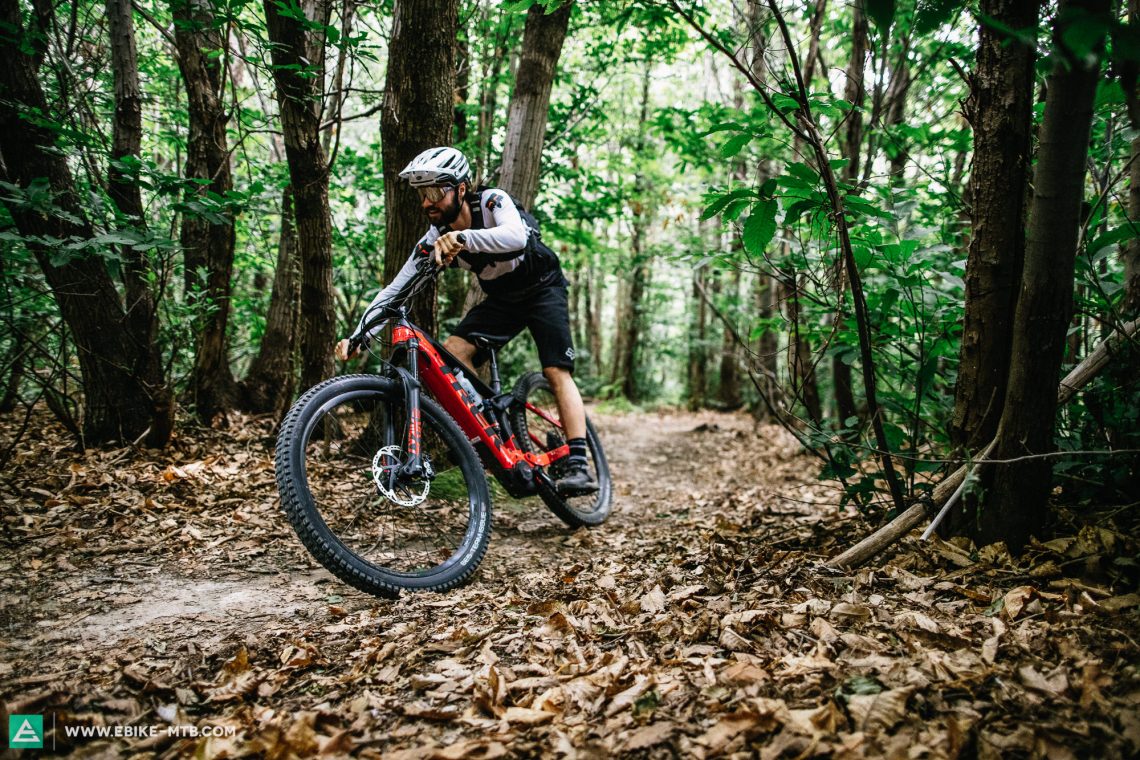
Compared to the previous Powerfly LT, the new Rail has become more precise and confidence-inspiring on the descents thanks to the more progressive suspension, the 2.6″ tires and new geometry. The climbing performance is equally impressive thanks to the central riding position and the 75° seat tube angle. The Rail transfers every bit of the very natural feeling power delivered by the new Bosch motor onto the trail, the front wheel sticks to the ground no matter how steep the incline – thanks to the longish 448 mm chainstays and the central riding position!

The R.I.B. battery integration not only looks very stylish, but it also feels very secure and makes a high-quality impression as you remove it. We’re yet to see a better solution for integrating the battery on a Bosch equipped bike! The same applies to the cap of the charging port in the seat tube.
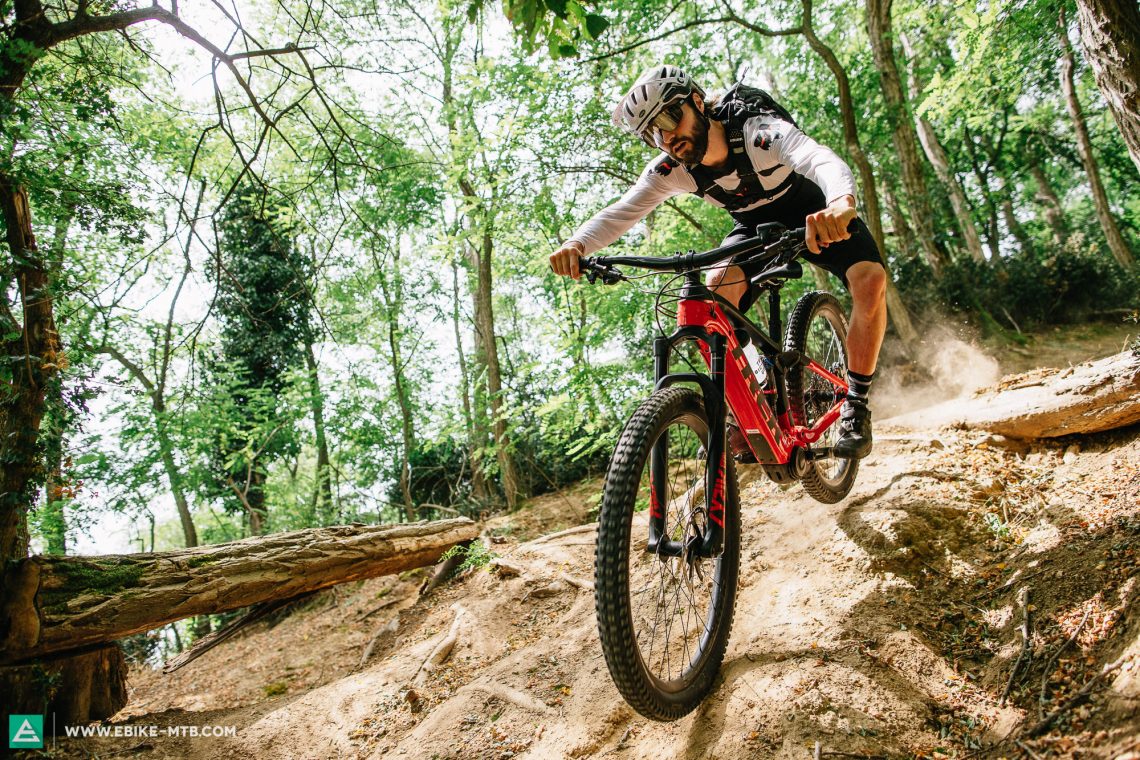
At € 7,199 the Trek Rail 8.9 isn’t a bargain, but we think the price is fair considering the sensible and excellently performing spec. It should be noted that our test bike had Shimano-Saint brakes instead of the four-piston Shimano SLX brakes it comes with as standard, as the latter weren’t available at the time of testing.
Conclusion
The name says it all! With the new Rail, Trek have created a high-quality, versatile and good-natured eMTB for those who like to point and shoot! The handling is very calm and composed but less active. Technical features such as the battery integration and the finer details are very convincing, testifying to the bike’s quality and the level of thought that the American brand has put into it! And with the new Rail, Trek are finally offering an eMTB in their Project One program. We’re curious to see how it performs against the 2020 competition and are looking forward to some more thorough testing!
For more info head to trekbikes.com
Did you enjoy this article? If so, we would be stoked if you decide to support us with a monthly contribution. By becoming a supporter of E-MOUNTAINBIKE, you will help secure a sustainable future for high-quality cycling journalism. Click here to learn more.
Words: Robin Schmitt Photos: Robin Schmitt, Ale Di Lullo









